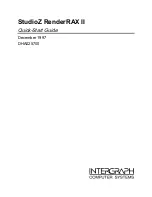
OLIMEX© 2015
A13-SOM user's manual
CHAPTER 1: OVERVIEW
1. Introduction to the chapter
Thank you for choosing this single board computer from Olimex! This document provides a user’s
guide for the A13-SOM boards. It covers both the -256 and the -512 version board. In the text
below 'A13-SOM' is used to address both “A13-SOM-256” and “A13-SOM-512”; if a specific
feature is available to only one of the boards then this is specifically mentioned and the board is
addressed with the RAM-indicating suffix.
As an overview, this chapter gives the scope of this document and lists the board’s features. The
document’s organization is then detailed.
The A13-SOM development board enables code development of applications running on the A13
microcontroller, manufactured by Allwinner Technology from China.
The A13-SOM board is typically used together with A13-SOM-WIFI or A13-SOM-WIFI-4GB
which provides the following expansions over the original design:
1) an USB-OTG connector for easier powering or adding USB modules to the board (via a splitter
or adapter)
2) a built-in WIFI module (Realtek 8188CUS)
3) an LCD display connector with 0.1'' step
4) 4GB NAND memory (only in A13-SOM-WIFI-4GB)
All of the features listed above are also supported in the software releases suitable for the board.
The hardware design of A13-SOM development board is considered intellectual property to
Olimex. The hardware design files are considered copyright material and would not be distributed.
The expansion boards available for A13-SOM are an open-source, open-hardware projects and all
documentation is available to the customer.
The software support for both boards is open-source and released under GPL license.
1.1 Introduction to SOM (System-On-a-Module)
OLIMEX System-on-Module (SOM) boards are powerful Linux-capable boards. They follow a
low-cost modular design which allows rapid product development. Each of these boards has two
parts – a main part which nests the processor, the memory and the power control unit and the
peripheral part which contains the USB ports, the video output and most of the connectors. SOM
designs are targeted at customers who want to apply custom modifications and own solutions based
on a specific processor without having to deal with multi layer PCBs with controlled impedance and
BGA assembly. This makes it possible to create simple boards (that might be manufactured by your
local board manufacturer) containing only the peripherals you need with the dimensions and shape
suitable for your specific solution.
Page 5 of 36























